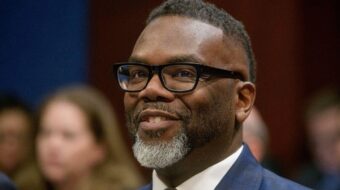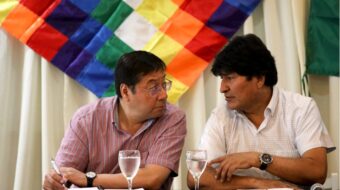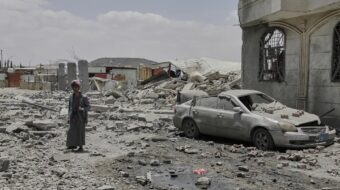Nineteen months ago, 36 municipalities in the Mexican state of Michoacan embarked upon a literacy campaign. Thousands graduated Sept. 12 — four days after International Literacy Day — in the capital city Morelia. In all, some 40,000 people can now read and write who couldn’t do so before.
It turns out their success was due to a program devised in Cuba and helped along by Cuban specialists working alongside their Mexican counterparts. The campaign continues with the aim of achieving a 96 percent literacy rate by 2007. Currently, about 14 percent of Mexicans are illiterate.
The experience mirrors a phenomenon going on in at least 13 other countries where Cuba has moved to the forefront in the global struggle against illiteracy. The content and methods of the literacy programs used in the campaign come from Cuba’s Latin American and Caribbean Pedagogical Institute (IPLAC), which is the source of logistical support, teaching materials, personnel and expertise.
Recruitment efforts for the literacy program in Argentina, Nicaragua, Venezuela, Ecuador and New Zealand have benefited from media coverage and Internet-based publicity, exemplified by the Argentine web site www.yosipuedo.com.ar.
IPLAC’s Leonela Relys Diaz has assumed a leadership role in devising and exporting “Yo sí puedo” (Yes I can), which is the name given to the Cuban program. She has gone to Haiti, Argentina and Venezuela to introduce “Yo sí puedo” and supervise its implementation there.
Relys herself in 1961 joined well over 100,000 other teenage volunteers in the Cuban countryside where they lived among the poorest people to bring Cuba’s own literacy campaign to fruition. Literacy soon rose to 97 percent, where it has remained ever since.
Today, as then, most students are adults who, denied schooling in their youth, are studying to be able to read at the fourth grade level. Venezuela’s “Mission Robinson” literacy drive followed Cuba’s example of recruiting volunteers, this time young teachers — over 100,000 of them. By 2004, 1.5 million previously non-reading Venezuelans had achieved basic literacy.
“Yo sí puedo” uses television and radio broadcasts to teach literacy, with television being the preferred method. It also uses videotapes and individual student notebooks. Local facilitators organize classes, encourage the students and complement the TV and radio broadcasts.
Interviewed recently in the course of her travels — she has become a celebrity — Relys talked about the essentials of the Cuban program.
The curriculum is adjusted to local circumstances and available resources. Formal instruction lasts no longer than half an hour, often twice daily, five days a week. The content of student readings derives from their own lives and hopes. Literacy teachers find antidotes to student boredom. For students, the program attempts to link letters with numbers, which are often familiar to non-readers.
The road ahead for arriving at universal literacy is long. About 860 million people worldwide are illiterate, and 98.5 percent of them living in poverty. Among Africans, 40 percent are unable to read; in Latin America, the figure is 12 percent, or 40 million people. Two-thirds of all illiterates are women.
In a 2003 letter to President Hugo Chavez of Venezuela, Cuban President Fidel Castro asserted that reading and revolution are connected. “Martí’s phrase, ‘To be educated is the only way to be free,’ is more relevant than ever in our era,” Castro wrote. “How can we speak of freedom and democracy when millions of people are total or functional illiterates? The privileged persons and masters of the world vehemently wish for masses of illiterate and semi-illiterate people, when deception and lies are the chosen weapons of those who pillage and enslave the peoples.”
atwhit @ megalink.net









